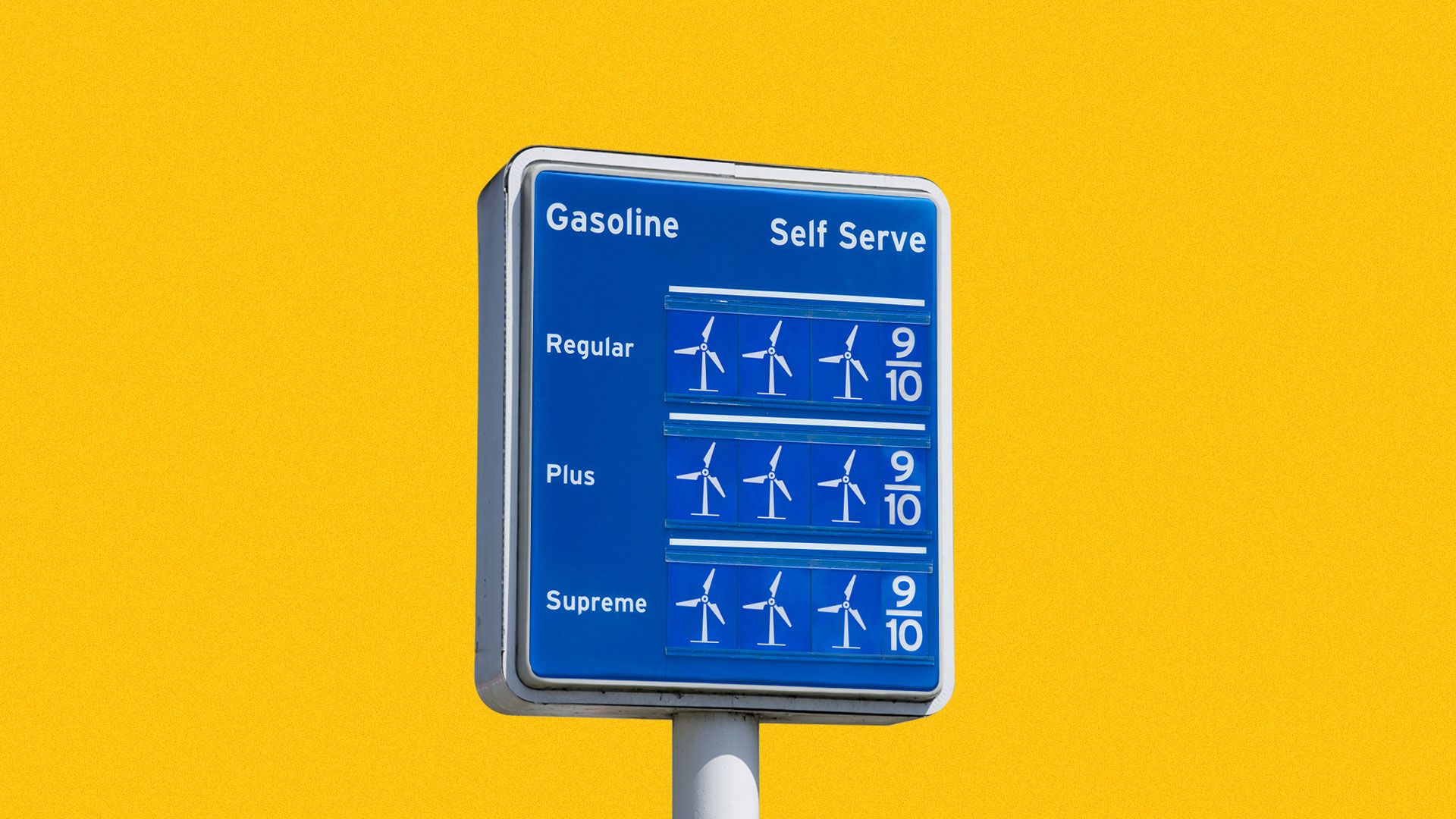
Big oil and gas producers might finally have found a renewable energy they can fully embrace--largely because it has a lot in common with oil and gas.
Driving the news: Up to 40% of the costs of offshore wind, including construction and maintenance of massive structures, overlap with offshore oil industry costs, a new International Energy Agency report finds.
Where it stands: While the United States has just one (tiny) offshore wind farm, a boom is on the horizon with a slew of companies planning big projects.
- European oil and gas majors are leading, with Equinor, Shell and BP either already operating existing offshore wind farms in other parts of the world or actively expressing interest in it.
- The world’s largest offshore wind developer, Denmark-based Ørsted, used to be an oil company. It changed its name from Danish Oil and Natural Gas and dumped its fossil fuel assets two years ago.
By the numbers: About 30% of the leases that the Interior Department has so far auctioned for future U.S. offshore wind farms are tied to the oil industry (Equinor and Shell), according to BloombergNEF data.
Why it matters: These companies have deep pocketbooks and global reach. If they make big bets on offshore wind, which accounts for just 0.3% of global electricity today, the growth of this carbon-free energy source could exceed current expectations.
- The IEA predicts it’ll increase at least 15-fold in the next 20 years.
- “The technology of offshore wind has made a real move forward, I would say, over the last four years,” BP CEO Bob Dudley told me in a recent interview. “We would be natural investors in that if the economics were acceptable.”
- BP operates some onshore wind farms, but no offshore ones. Dudley said the company is looking at several countries around the world, including the U.S., but declined to offer specifics.
The big picture: Big oil and gas companies are under pressure from shareholders, lawsuits and the public to more readily acknowledge their role fueling climate change and more fully embrace a global, albeit uneven, transition to cleaner energy sources.
Between the lines: An increasing trend among these companies is to buy stakes in separate developers already focused on clean energy, such as solar and electric vehicle charging.
- But because of the significant crossover between offshore oil and wind, the producers are more likely to make it part of their internal portfolios.
Go deeper: Troubles lurk for America’s emerging offshore wind boom







